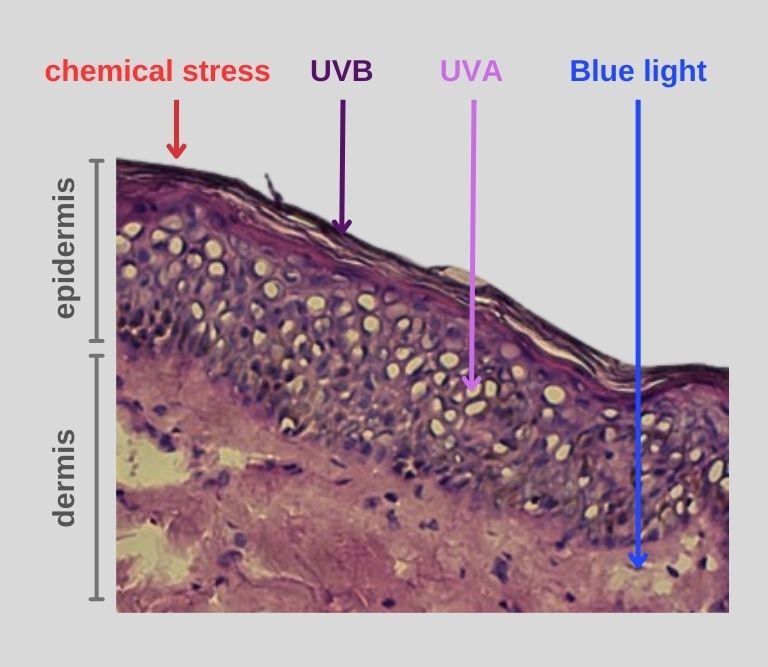UV stress (UVA or UVB), is applied to various human skin models, including primary cells and skin explants, to mimic physiological damage caused by solar radiation. Following UV stress, we investigate various biological processes: melanogenesis, intercellular communication, analysis of miRNA/mRNA profiles in donor and recipient cells, inflammatory signaling and oxidative stress.
Blue light stress is known to penetrate the skin & induce oxidative stress, inflammation, circadian rhythm disruption, and pigmentation changes. We apply blue light to various human skin models, including primary cells and skin explants. Post-exposure, we evaluate the damaging effects of blue light by performing melanin quantification, histological assessment, ROS detection, and oxidative protein damage analysis in addition to Genscreening & immunolabeling.
In chemical stress models, different agents are applied to trigger specific cellular responses. α-MSH (alpha-melanocyte–stimulating hormone) is used as a potent inducer of melanin synthesis. Niacinamide acts as a pigmentation inhibitor. Alpha-arbutin & Kojic acid decrease melanin production.
Applying one or several stressors to the different models allows us to evaluate the preventive, protective, or restorative potential of active ingredients.


